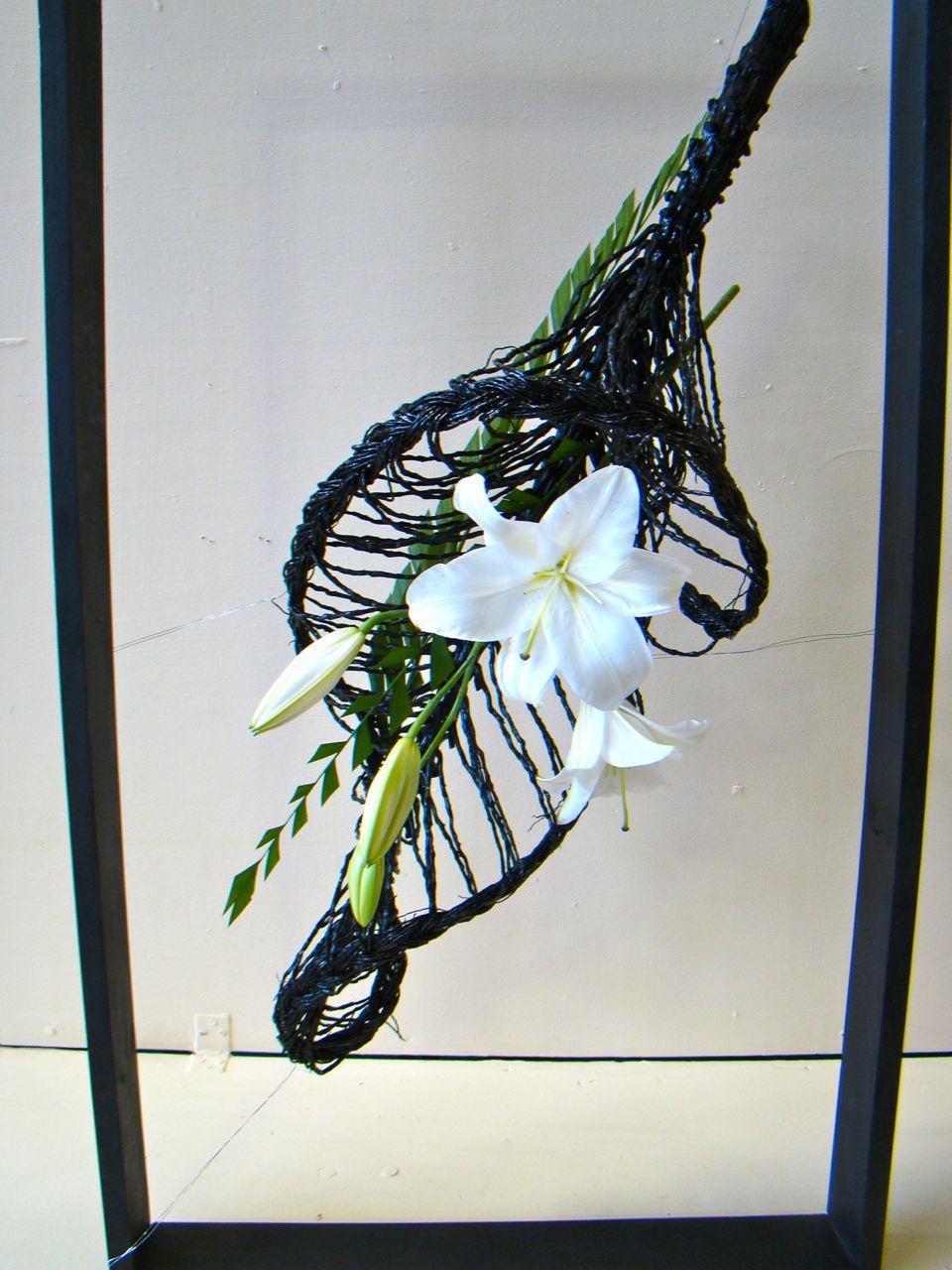Seeking A Professorship In Fine Arts: Focus On Spatial Design

Table of Contents
Essential Qualifications for a Professorship in Spatial Design
Securing a professorship in spatial design typically hinges on a robust foundation of qualifications. Universities seek candidates who not only possess advanced knowledge but also demonstrate exceptional teaching capabilities and a commitment to ongoing research.
Advanced Degree and Expertise
A PhD or MFA in a relevant field, such as Architecture, Interior Design, Environmental Design, or a closely related discipline, is usually a prerequisite. Beyond the degree, you must demonstrate specialized expertise in specific areas of spatial design. This could include sustainable design practices, proficiency in digital fabrication techniques, or a deep understanding of exhibition design principles.
- Specific Skills and Software Proficiencies: Revit, AutoCAD, Rhino, V-Ray, Grasshopper, Adobe Creative Suite (Photoshop, Illustrator, InDesign). Highlight your proficiency levels.
- Research Methodologies: Showcase experience with qualitative and quantitative research methods, including user experience studies, spatial analysis, and environmental performance assessments.
- Publications and Patents: List any published articles in peer-reviewed journals, book chapters, conference proceedings, or patents related to spatial design. Quantify the impact wherever possible (e.g., number of citations, awards received).
Teaching Experience and Pedagogical Skills
A strong teaching record is paramount. Universities look for evidence of successful teaching at the university level, showcasing your ability to create engaging learning environments and mentor students effectively.
- Innovative Teaching Methods: Describe examples of active learning strategies, project-based learning, or technology integration you've implemented in your teaching.
- Student Evaluations and Awards: Mention any positive student feedback, teaching awards, or recognition for your pedagogical contributions.
- Course Development: Detail your experience in developing and teaching courses in spatial design, including course outlines, syllabi, and assessment methods.
Research Portfolio and Publications
A compelling research portfolio demonstrating original contributions to the field is crucial for securing a professorship in spatial design. This includes published work, ongoing research projects, and secured funding.
- Research Impact: Highlight the significance and impact of your research, its contribution to the field, and its potential for future development.
- Grants and Funding: Mention any grants, fellowships, or research funding you've obtained. This demonstrates your ability to secure resources and conduct impactful research.
- Originality and Relevance: Showcase the originality and relevance of your research to current trends and challenges within spatial design. Connect your research to broader societal issues.
Networking and Building Connections within the Academic Community
Networking is crucial for securing a professorship in spatial design. Building relationships with professors and department heads can open doors to opportunities and provide valuable insights.
Attending Conferences and Workshops
Actively participate in relevant academic conferences and workshops. These events provide opportunities to present your research, network with colleagues, and learn about upcoming job openings.
- Relevant Conferences: List specific conferences such as ACSA (Association of Collegiate Schools of Architecture) conferences, international design conferences focused on spatial design, and relevant disciplinary conferences.
- Networking Strategies: Emphasize your strategies for initiating conversations, exchanging contact information, and following up after these events.
Collaborating with Established Academics
Collaborating with established professors strengthens your profile. Joint publications and presentations demonstrate your ability to work effectively within the academic community.
- Potential Collaborators: Mention specific researchers or professors you've collaborated with or aim to collaborate with.
- Benefits of Collaboration: Highlight the benefits of collaboration, such as increased research output, expanded professional network, and access to resources.
Leveraging Online Platforms
Use professional networking sites like LinkedIn and ResearchGate to connect with academics and institutions. Maintain a strong online presence showcasing your work and expertise.
- Importance of Online Presence: Stress the importance of having a well-maintained professional profile reflecting your expertise and achievements.
- Professional Website: Create a professional website or portfolio to showcase your research, publications, and teaching materials.
Crafting a Compelling Application for a Professorship in Spatial Design
Your application materials must be meticulously crafted to highlight your qualifications and fit with the specific requirements of each position.
Tailoring Your Application Materials
Customize your CV, cover letter, teaching statement, and research statement for each job application. Highlight the skills and experience directly relevant to the specific position's requirements.
- Keywords and Tailoring: Emphasize the importance of using relevant keywords from the job description and tailoring your application to match the specific needs and priorities of the institution.
- Applicant Tracking Systems (ATS): Demonstrate understanding of how to optimize your application materials for applicant tracking systems.
Securing Strong Letters of Recommendation
Obtain letters of recommendation from respected professors and mentors who can convincingly attest to your abilities and potential as a spatial designer and educator.
- Requesting Recommendations: Explain how to respectfully and effectively request strong letters of recommendation, providing your recommenders with ample time and information.
- Choosing Recommenders: Highlight the importance of selecting recommenders who can speak to your specific skills and accomplishments in spatial design, teaching, and research.
Preparing for Interviews
Thoroughly prepare for interviews by practicing your answers to common questions and formulating insightful questions to ask the interview panel.
- Common Interview Questions: List common interview questions and suggest strategies for crafting strong and concise answers.
- Asking Insightful Questions: Explain the importance of asking thoughtful questions to demonstrate your interest and engagement.
Conclusion
Securing a professorship in spatial design demands a comprehensive strategy that includes exceptional qualifications, strategic networking, and a meticulously crafted application. By focusing on your research, teaching experience, and building strong connections within the academic community, you significantly enhance your chances. Remember to tailor your application to each opportunity and highlight your unique contributions. Don't be discouraged by setbacks; continued effort and refinement of your approach will increase your chances of success. Start your journey today toward achieving your goal of a professorship in spatial design!

Featured Posts
-
 Foto Investigasi Penipuan Online Internasional Di Myanmar Ribuan Korban Termasuk Warga Indonesia
May 13, 2025
Foto Investigasi Penipuan Online Internasional Di Myanmar Ribuan Korban Termasuk Warga Indonesia
May 13, 2025 -
 Rossiysko Myanmanskiy Delovoy Forum V Moskve Klyuchevye Sobytiya I Uchastniki
May 13, 2025
Rossiysko Myanmanskiy Delovoy Forum V Moskve Klyuchevye Sobytiya I Uchastniki
May 13, 2025 -
 The Big Issues Childrens Competition And The Winner Is
May 13, 2025
The Big Issues Childrens Competition And The Winner Is
May 13, 2025 -
 Pregnant Cassie Ventura And Husband Alex Fine Make First Public Appearance
May 13, 2025
Pregnant Cassie Ventura And Husband Alex Fine Make First Public Appearance
May 13, 2025 -
 Elsbeth Season 2 Finale Returning Characters Confirmed
May 13, 2025
Elsbeth Season 2 Finale Returning Characters Confirmed
May 13, 2025
Latest Posts
-
 Live Stream Texas Rangers Vs Boston Red Sox Mlb Game For Free
May 13, 2025
Live Stream Texas Rangers Vs Boston Red Sox Mlb Game For Free
May 13, 2025 -
 Free Mlb Live Stream Texas Rangers Vs Boston Red Sox Game
May 13, 2025
Free Mlb Live Stream Texas Rangers Vs Boston Red Sox Game
May 13, 2025 -
 2025 Texas Rangers Season Your Guide To Game Schedules Tv Broadcasts And Blackout Restrictions
May 13, 2025
2025 Texas Rangers Season Your Guide To Game Schedules Tv Broadcasts And Blackout Restrictions
May 13, 2025 -
 Nhl Draft Lottery 2024 Live Draw New Format
May 13, 2025
Nhl Draft Lottery 2024 Live Draw New Format
May 13, 2025 -
 Protest Song Of 2024 The Story Behind Hit The Road Drax
May 13, 2025
Protest Song Of 2024 The Story Behind Hit The Road Drax
May 13, 2025
